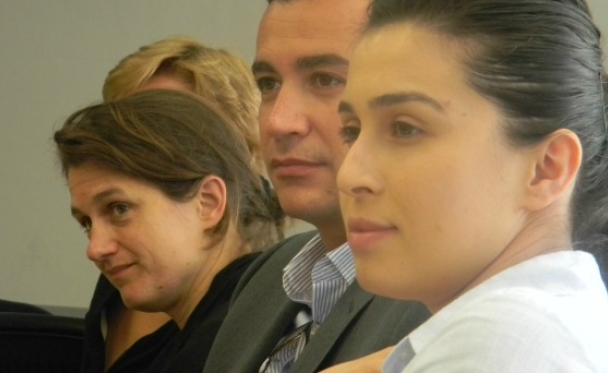
International Exchanges: Global Impact
By Liz Van Horne, CPD Intern
Professor César Villanueva Rivas of Universidad Iberoamericana taught a class on international exchanges at the 2011 Summer Institute last week. As a leading expert on cultural affairs in Spanish speaking countries, Dr. Villanueva frequently travels from his home university in Mexico City to guest teach at universities and cultural centers in Europe and the Americas. For this class, he discussed the importance and benefits of educational exchanges as well as their challenges.
Participants got an in-depth look at how international exchanges expose individuals to different languages and customs so they can gain an in-depth perspective on the culture of their host country. International exchanges are tools of public diplomacy that provide great potential for nations, businesses and societies to engage societies abroad and explore foreign cultures. In the long-term, they also allow institutions to produce economic growth internationally, promote national image, and alleviate prejudice between nations. As Dr. Villanueva described, “Exchanges can be part of a structured foreign policy aimed at cosmopolitan and cooperative relations vis-a-vis other nations, or they can be part of an industry that creates jobs and strengthens local economies. In any case, they are a win-win situation for most countries that posses the infrastructure to develop educational exchanges.”
Professor Villanueva presented data showing which countries are becoming popular for such exchanges to take place, as well as the increasing number of total international students over the past 60 years. The total number of international students worldwide has increased from 2,403,000 in 1948 to a remarkable 19,037,000 in 2010. However, the numbers can be misleading if they are not compared with the proportion of students enrolled in higher education. Overall, international exchanges happen at a very small proportion of all levels of education, especially amongst developed nations. The US currently leads all other countries in the number of foreign students hosted with 21.4% of all international students. The United Kingdom and France trail with 12.6% and 8.8%, respectively. Villanueva’s data also showed that USC was first in the list of top ten institutions hosting international students in 2010 with 7,987 students.
Before concluding, Dr. Villanueva presented the challenges of international exchanges, such as the possibility that the brightest students may stay in their host countries rather than taking their newly-acquired talents and perspectives back home. In addition, because some of the results of international exchanges are long-term attitudinal changes that carry expensive upfront price tags, organizations and governments are devoting less and less resources and money to such programs.
Rose Kouwenhoven, a Summer Institute participant who works as a digital communications officer for the Royal Netherlands Embassy, said she would target the exchange towards university students rather than government officials or other groups. “I think that would allow the program to reach out to the greatest number of people,” she said. “Also, students are the future leaders of the world, and it would be a positive thing for them to have that experience and return home with a new image of another culture.”
In small groups, participants explored a case study in which the Mexican government seeks to develop its international educational programs. Through active discussion, they solved issues such as finding the target group of the program, identifying a second partner nation for Mexico, and deciding which kind of programs should receive priority. Apart from the US being the main case in focus in finding a partner nation, the alternative countries suggested were Chile or Argentina in Latin America, Singapore, India or South Korea in Asia and United Arab Emirates in the Middle East. Surprised that such choices as Spain, France and the UK had been left out, Professor Villanueva commented that “there seems to be a growth of possibilities for international education in emerging nations today.”
Public diplomacy professionals gathered at the USC Annenberg School for Communication & Journalism on July 20 as part of the Summer Institute in Public Diplomacy professional training program run by the USC Center on Public Diplomacy. This intensive two week course brings together eighteen participants from across the globe to further their public diplomacy skills and have the opportunity to engage in discussion with people from all types of public diplomacy backgrounds.
For more information on the CPD Summer Institute in Public Diplomacy, please click here.
Most Popular
-
November 3
-
November 5
-
September 25
-
September 30
-
October 16
Most Popular Blogs
-
November 3
-
November 5
-
September 25
-
September 30
-
October 16







